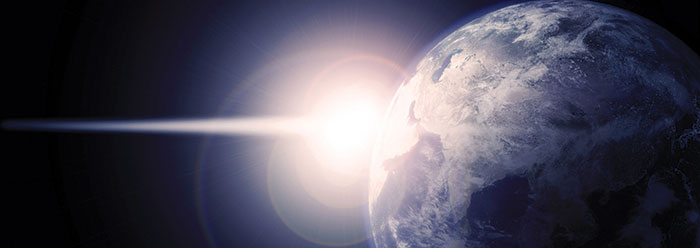The Flood cataclysm dramatically morphed the early earth into the earth we know today. Its original “very good” state was pleasant and stable (Genesis 1:31), but today things are not so quiescent. Earth’s crustal plates move relative to one another. If they collide, they either crumple up into mountains or plunge one beneath the other, producing volcanoes, earthquakes, and tsunamis.
In the original earth, most continents may have been connected as one great stationary supercontinent, but we can’t be sure. Creationists generally agree with plate tectonic theory, but they propose that the movements were much more rapid than what the uniformitarians teach. Whether or not the continents were connected at creation, it appears that all the land masses were together sometime during the Flood because rock strata traits match and continental boundaries fit together like puzzle pieces. Creationist geophysicists consider it likely that continents were indeed together at the height of the Flood and then violently separated.
The rapid raising of the continents out of the ocean on Day Three of creation week required forces of unthinkable magnitude. Once creation was completed, however, forces no longer acted in a fashion powerful enough to rend plates asunder and move them from their original locations.
Fossils of trees living before the Flood seldom give evidence that they grew at high altitudes. Present mountain chains were forced upward by the Flood. There must have been some difference in elevation before the Flood because rivers fed by the “fountains of the great deep” flowed by gravity to lower elevations (Genesis 7:11). Rivers of today are fed by snow and rain, but pre-Flood rivers were supplied by underground water sources and a nightly heavy mist.
In Genesis 7:11, the Flood began with the breaking open of “all the fountains of the great deep.” Those on the ocean bottom caused a series of devastating reactions that fully altered the planet. Giant energy waves—tsunamis—rippled out from the quaking fountains, forcing water inland. Earthquakes and tectonic convulsions rattled the continents. Upwelling, molten magma evaporated seawater, spraying vapor into the atmosphere, continually resupplying “the windows of heaven,” and inundating earth with an unparalleled downpour and the resulting erosion. There was a special intensity for the first “forty days and forty nights,” but the tumultuous rain didn’t stop for five months (see Genesis 7:11-12, 8:3). Shock waves reverberated throughout the ocean, bringing unimaginable devastation to sea life. Waves of water and loose sediments carrying sea creatures were repeatedly pushed inland.
These actions led to the fossilization of trillions of marine organisms. First to be affected were dwellers of the ocean depths, directly impacted as the “fountains” burst open. Next, those in the continental shelf regions were devastated, followed by the coastline inhabitants, then those in low-lying areas, and, finally, the upland denizens. (This series mirrors the general sequence on the uniformitarian’s Geologic Column.) The waters continued rising in waves until the pre-Flood mountains were submerged. An abnormally high but fluctuating sea level was maintained throughout the Flood as complex interaction between tectonic and hydrodynamic forces caused the water to come and go in surges. Finally, during the next seven months, the waters drained off into newly deepened and widened ocean basins, exposing dry land and ending the Flood episode.
The pre-Flood world—existing in wonderful equilibrium since creation—literally ruptured. The unleashed forces continued for some time, until the relative balance we now experience was re-established. The once “very good” earth was ruined by man’s sinful rebellion.
Adapted from Dr. John Morris’ The Global Flood: Unlocking Earth’s Geologic History. 2012. Dallas, TX: Institute for Creation Research.
* Dr. Morris is President of the Institute for Creation Research.
Cite this article: Morris, J. 2013. Geologic Changes to the Very Good Earth. Acts & Facts. 42 (2): 16.

















